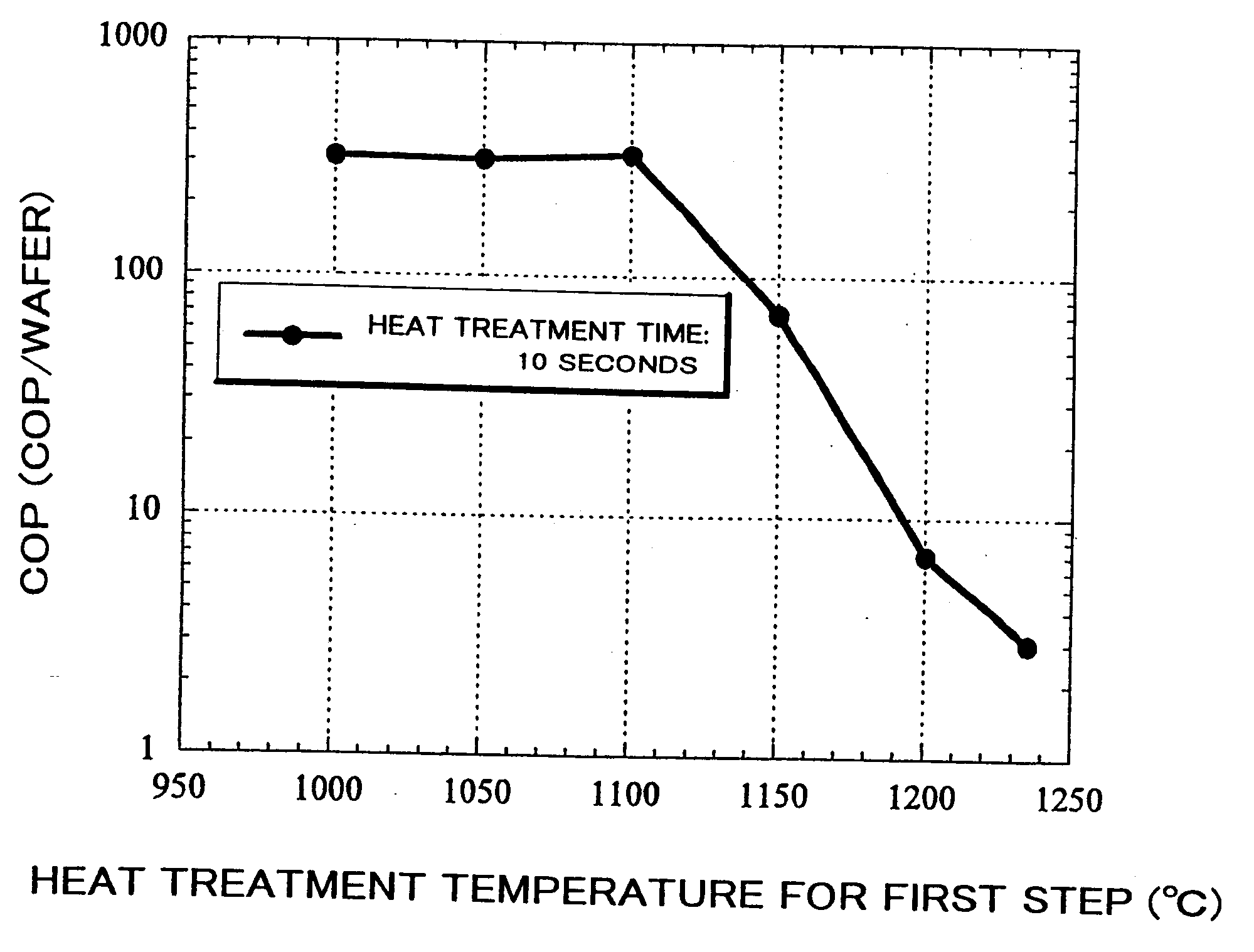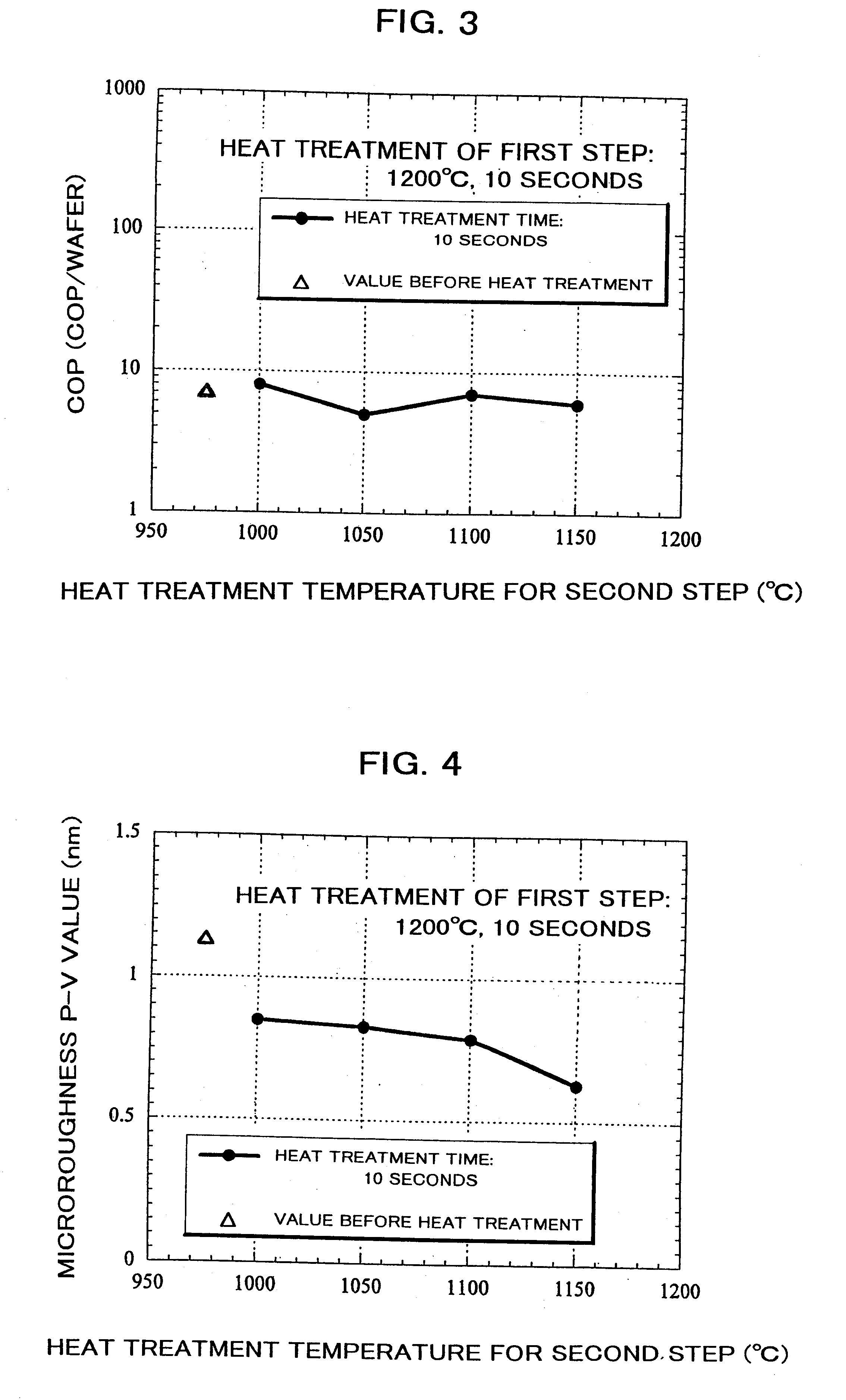Method for heat treatment of silicon wafer and silicon wafer
a heat treatment method and silicon wafer technology, applied in the direction of silicon compounds, instruments, scanning probe techniques, etc., can solve the problems of degradation of electric characteristics, method does not afford sufficient improvement of electric characteristics, and heat treatment of the aforementioned prior art does not sufficiently improve cop
- Summary
- Abstract
- Description
- Claims
- Application Information
AI Technical Summary
Benefits of technology
Problems solved by technology
Method used
Image
Examples
Embodiment Construction
The present invention and embodiments thereof will be explained more in detail hereinafter.
The inventors of the present invention investigated conditions for heat treatment which can reduce the density of COPs present on silicon wafer surface to improve the oxide dielectric breakdown voltage, and decrease microroughness and haze to realize improvements of electric characteristics such as improvement of carrier mobility through various experiments. As a result, they found that, if the heat treatment under the reducing atmosphere containing hydrogen gas is performed by a plurality of steps each of which is performed with a differently defined heat treatment condition, silicon wafers with low COP density and small microroughness and haze can be obtained. Further, they investigated various conditions for the aforementioned characteristics of the present invention, and thus completed the present invention.
First, in order to establish suitable heat treatment conditions for the plurality o...
PUM
 Login to View More
Login to View More Abstract
Description
Claims
Application Information
 Login to View More
Login to View More - R&D
- Intellectual Property
- Life Sciences
- Materials
- Tech Scout
- Unparalleled Data Quality
- Higher Quality Content
- 60% Fewer Hallucinations
Browse by: Latest US Patents, China's latest patents, Technical Efficacy Thesaurus, Application Domain, Technology Topic, Popular Technical Reports.
© 2025 PatSnap. All rights reserved.Legal|Privacy policy|Modern Slavery Act Transparency Statement|Sitemap|About US| Contact US: help@patsnap.com



